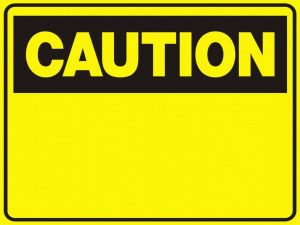
Safety compliance should be one of the top priorities of any major manufacturing plant or production line, and that goes all the way down to the very basic: Safety signs. While it may seem trivial, particularly to larger safety concerns that may be on the production floor, overall factory and plant safety starts with this basic component.
Why are these signs so important?
Workers in factories and plants throughout the world go to work every day in high-risk environments and production floors. While they likely have been given the necessary precautions, warnings, and other necessary alerts before coming onto the floor, they may not fully understand the risks or where these dangerous zones are. There might be areas or rooms on the production floor that don’t appear at all risky but actually prove dangerous for the unwitting.
It’s mandatory, according to law, to make sure there are clear, delineated safety signs or markings that indicate if an area is hazardous, and if certain products or items need special handling. On-the-job safety is always a major concern for companies that value their workers, and with the recent years’ improvement on safety for workers, there are now standards that companies nationwide must adhere to.
Examples of vital signages
During the work day, throughout the work area, there must be clear signs that keep employees, workers, supervisors, and guests—virtually anyone who steps into the factory floor—aware of what to do and what to be cautious about. These are mandatory by law.
The first example is the traffic signs. They may not be particularly obvious as safety signs, but traffic signs which indicate which way people, carts, or machinery may be moving will keep workers aware of whether or not they may be coming upon someone. Prohibition signs prevent people from smoking or eating in certain areas, or even prohibit them from being there without security equipment. Which brings us to security signs, which remind workers without clearance or the proper gear not to enter areas with dangerous materials or intense temperatures. Finally, there are the office signs, which let people know where to find the supervisors or offices, in case anything goes wrong.
All these signs may be simple, but they are important in keeping worker safety in the building. It starts from the very basic, after all. To learn more about safety practices and vital information in maintaining production efficiency, visit www.kcsupply.com and read more on the blogs.


